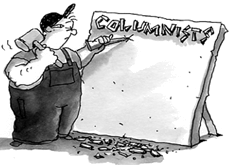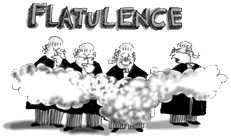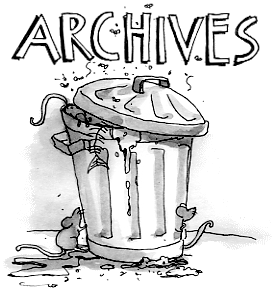Prasad is dead
 Comment •
Comment •  Wednesday, April 3, 2019
Wednesday, April 3, 2019 Entirely a matter for the jury ... Prasad Directions - the common law right the High Court found was never there ... Jurors to be kept on to the bitter end of hopeless prosecutions ... Rotten apples at the fruit shop ... Prasad should be reinstated by legislation, says long-time Canberra barrister Jack Pappas
 Prasad Directions off the agenda for juries
Prasad Directions off the agenda for juries
ON March 20, the High Court of Australia, by a piece of impeccable circular reasoning, reversed a practice which has existed in Australian criminal trials for over half a century.
The court declared that the giving of a "Prasad Direction" is contrary to law and should not be administered to a jury determining a criminal trial.
A "Prasad Direction" had been given by judges in circumstances where they decided that the jury might consider the evidence for the prosecution so weak or unsatisfactory that they could not convict on the criminal standard of beyond a reasonable doubt.
The direction was and could only be given at the conclusion of the prosecution or crown case or any time thereafter. In response to a Prasad Direction a jury could only acquit. If jurors did not decide to acquit then the trial would continue to its end.
The source of the direction was R v Prasad (1979) 23 SASC 161 in a case where there was an allegation of deception in the transfer of a property.
The direction was, in terms, a reminder to the jury of its common law right at any time after the end of the prosecution case to return a verdict of not guilty, if they regarded the evidence as so unsatisfactory that it would be dangerous to act upon it.
Juries were always told that the issue was one entirely for them if a Prasad Direction was given and in my considerable experience no judge ever indicated his or her personal view of the quality of the evidence when giving such a direction.
The High Court has now found that there is and never was any such common law right because, as their reasoning goes, the supposed right was based on practice and not vice versa.
To my mind that distinction is artificial because by the very nature of common law rights they spring from practice.
Whatever may be the thinking underpinning of the High Court's decision in Director Of Public Prosecutions Reference No 1 of 2017 the decision of all seven justices has killed Prasad stone dead.
The trouble with the decision is that a Prasad Direction played a very important role in the criminal justice system.
The evidence presented at trial these days is almost universally the evidence gathered by police and compressed into witness statements. Before that evidence is adduced at trial it has been through no testing process.
Long gone are the days of a full committal hearing in which evidence was tested and refined by cross-examination.
Before committal hearings were effectively abolished by legislation, to save the government the expense constituted by costs orders in favour of accused persons acquitted at the committal stage, a Director of Public Prosecutions had a fair chance to assess the quality of the evidence following cross-examination and to weigh up the submissions of defence counsel before making a decision whether or not to place someone on trial.
Police, even well-meaning and well-trained police, are not lawyers and their statements bristle with inadmissible material, irrelevant observations, opinion and argument almost all of which can be excluded by cross-examination or objection at trial.
The result is, in the absence of committal hearings, that a prosecution case at the end of its presentation at trial almost never looks or reads like the prosecution case on paper at the start of the trial.
It is against that background that Prasad Directions played a valuable part in the dispensation of criminal justice.
If evidence is shown to be fundamentally flawed then a jury, as representatives of the community and the body charged with assessing such matters, should be entitled to say so and not have to suffer through evidence for the defence, the addresses from prosecuting and defence counsel and a summary of the evidence and directions on the law from the trial judge.
If that point has been reached, jurors should be entitled to say "enough is enough".
If you see a rotten apple at the fruit shop you don't need to eat it before you know it is rotten and you don't need the fruiterer to point out to you that it is rotten, while no amount of argument will convince you that it is not rotten.
Prasad Directions were only rarely given because judges maintained control over the circumstances in which it was considered appropriate to inform a jury of their common law right.
In my experience juries in a fair percentage of cases did not acquit but would indicate instead that they wished to hear all the evidence particularly in word versus word type of cases.
I have, however, been involved in many cases over 35 years where a jury has been only too ready and too happy to indicate its disapproval of a case which turned out to be bad to the core.
Accused persons in this country cannot recover any costs from the crown if at the end of the case they are acquitted. That situation does not change whether they are exonerated following a Prasad Direction or at the conclusion of a full trial.
It is fundamentally unfair to an accused person, and not in the community's best interests, for jurors to be required to sit through sometimes two or three days of additional evidence, argument, submissions and directions from a judge to reach the conclusion which would have been reached days before following a properly administered Prasad Direction.
The High Court identified what it thought to be dangers in the Prasad procedure:
• That a jury will be deprived of the benefit of addresses by counsel.
• That a jury will be deprived of the benefit of a judge’s summing up.
• That a jury may react against perceived pressure from a judge to acquit an accused person and at a later stage perversely convict.
• That a jury might form a provisional view about the acceptance of a witnesses’ evidence and although they choose not to acquit at that stage that view may be hard to displace.
• Counsel may have no opportunity to correct a jury's mistaken understanding of the case
• Defence counsel who contemplates leading or not leading evidence may derive some perceived advantage by knowing if, in fact, the jury want to hear more evidence.
The answer to those concerns is, in part found, in the rotten apple analogy and in part comes back to the care and limited circumstances in which Prasad Direction were traditionally given.
The High Court has said that from now on if there is evidence, even if tenuous or inherently weak or vague, that is capable of supporting a verdict of guilty, the matter must be left to the jury.
 Canberra barrister Jack PappasAdmittedly, there is still a very limited class of case which may be terminated early by a "no case" ruling by the judge. However, judges in this country cannot, without infringing the function of a jury, take a case away from the jury and order an acquittal even they conclude that a conviction would amount to an unsafe and unsatisfactory verdict.
Canberra barrister Jack PappasAdmittedly, there is still a very limited class of case which may be terminated early by a "no case" ruling by the judge. However, judges in this country cannot, without infringing the function of a jury, take a case away from the jury and order an acquittal even they conclude that a conviction would amount to an unsafe and unsatisfactory verdict.
Since the public has been deprived of the safety valve of Prasad Directions, the judges should be given the power to take a case away from a jury if they perceive that an outcome will be either unsafe or unsatisfactory, resulting in injustice or an inevitably successful appeal.
The solution to the lacuna created by the High Court decision is either to reinstate the Prasad Direction as a part of criminal practice by statutory amendment or to give trial judges greater power at any stage of proceedings to bring them to a conclusion.
Both solutions lie in the hands of the attorney general and the government and deserve earnest and urgent consideration.
Jack Pappas - barrister-at-law
 Crime,
Crime,  High Court of Australia
High Court of Australia 








Reader Comments (1)